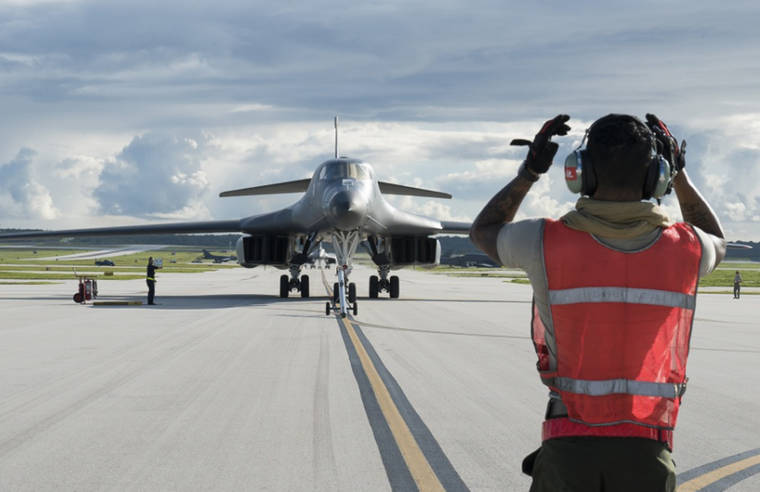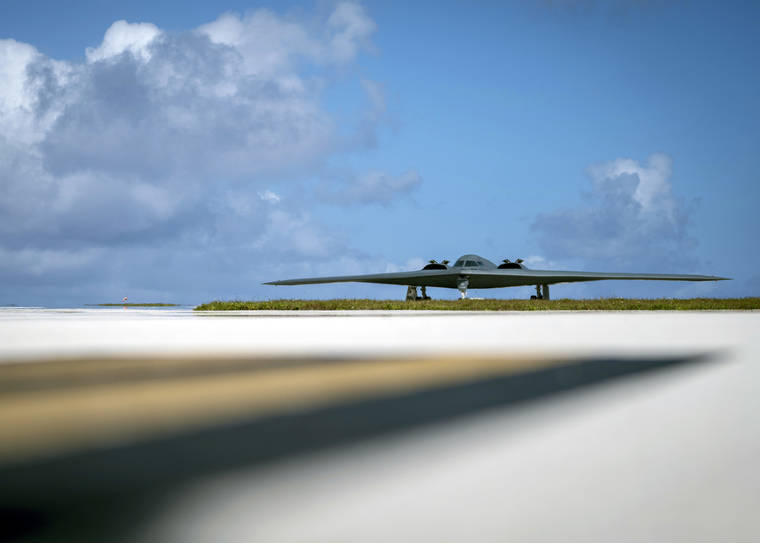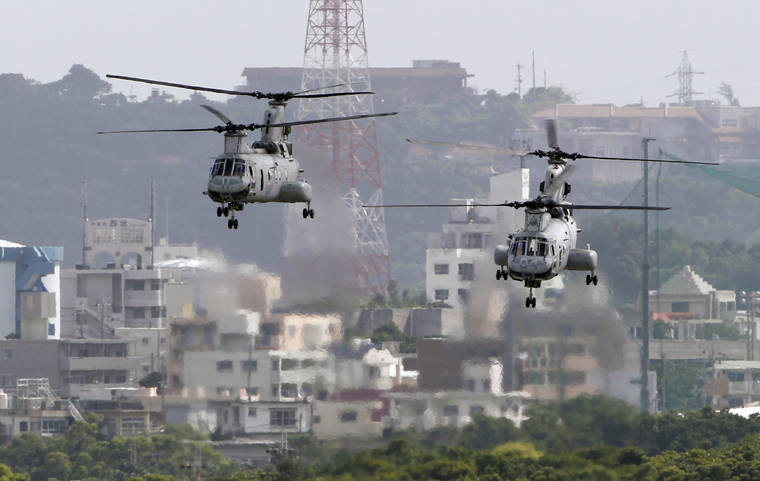HONOLULU — President Donald Trump is raising a large chunk of the money for his border wall with Mexico by deferring several military construction projects slated for Guam, a strategic hub for U.S. forces in the Pacific.
This may disrupt plans to move Marines to Guam from Japan and to modernize munitions storage for the Air Force.
About 7% of the funds for the $3.6 billion wall are being diverted from eight projects in the U.S. territory, a key spot in the U.S. military’s efforts to deter North Korea and counter China’s growing military.
The administration has vowed it’s only delaying the spending, not canceling it. But Democrats in Congress, outraged over Trump’s use of an emergency order for the wall, have promised they won’t approve money to revive the projects.
“The fact is, by literally taking that money after it had been put in place and using it for something else, you now put those projects in jeopardy,” said Carl Baker, executive director of Pacific Forum, a Honolulu-based foreign policy think tank.
The Senate on Wednesday passed a measure blocking Trump from raiding the military construction budget for the wall. The Democratic-controlled House is likely to pass the bill, but Trump is expected to veto it as he did with an identical measure in March.
The tiny island of Guam holds a naval base with fast attack submarines and an Air Force base with bombers that rotate in from the mainland.
The U.S. currently plans to start moving 5,000 Marines there from Okinawa in southern Japan around 2025. This is part of a decades-long effort by Tokyo and Washington to relieve the congested Japanese island’s burden of hosting half the U.S. forces stationed in Japan. The total cost of relocating the Marines is $8.7 billion, of which Japan is paying $3.1 billion.
The projects put on hold by the border wall are a small share of this total, yet critical to the relocation.
There’s $56 million to build a well system that will supply most of the water to be used by a new Marine base. The area’s existing water supply is inadequate to meet the needs of the transferred troops.
There’s also a $50 million live-fire training range and a $52 million munitions storage facility. Documents about the projects the military provided to Congress say the Marines won’t leave Okinawa until replacement facilities in Guam are ready. The documents say failure to complete these two projects could delay or prevent the Marines from moving.
Guam activists opposed to the live-fire range said the delay will give them time to study ancient settlements found in the area. They said it would be irresponsible to move forward on projects that would destroy cultural sites and cause irreversible environmental damage when there’s so much uncertainty about the relocation.
“Our organization is conflicted about the means in which the pause was achieved because these are two instances of colonial injustice, one impacting the other,” the group Prutehi Litekyan: Save Ritidian said in a statement.
The U.S. reassured Japan immediately after the announcement that it would stick to the existing timeline.
“We have received explanation from the U.S. side about the shifting of the budget that it will not affect the planned movement of Marines on Okinawa to Guam, and that the U.S. government commitment to the realignment plan is unchanged,” then-Defense Minister Takeshi Iwaya told reporters earlier this month.
Discussions to reduce the U.S. presence on Okinawa began in the mid-1990s after the rape of a 12-year-old Okinawan girl by three U.S. servicemen sparked mass demonstrations. The allies in 2006 said they would send Marines to Guam by 2014, a deadline that slipped as they revised plans.
Although Okinawa makes up less than 1 percent of Japan’s land space, it hosts about half of the 54,000 American troops stationed in Japan and is home to 64 percent of the land used by the U.S. bases in the country under a bilateral security treaty.
Jeffrey Hornung, a researcher at the RAND Corporation, a public policy research institute, said even before the latest development, some Okinawa residents were frustrated with the lack of progress in moving the Marines.
“The fact is, the longer that the projects on Guam are delayed, that means the longer that there’s not going to be any forward movement on some aspects of moving the Marines off Okinawa,” Hornung said. “And this all comes from taking money to build a border wall.”
Diverted spending also will affect the Air Force, including $45.1 million for two projects to update 70-year-old munitions storage.
The Air Force has been rotating bombers — the B-2 stealth bomber as well as the B-1 and B-52 — through Guam since in 2004 to compensate for U.S. forces sent from the Asia-Pacific region to fight in the Middle East. In 2017, the U.S. dispatched a B-1 bomber from Guam to the Korean peninsula as a show of force after North Korea accelerated its efforts to test intercontinental ballistic missiles and expand its nuclear weapons program.
Project documents say existing facilities won’t adequately support the mission of the 36th Munitions Squadron on Guam. They say upgrades are needed to correct a faulty door design, address earth cover lost during typhoons and house new long-range air-to-ground precision missiles.
U.S. Rep. Ed Case, a Democrat from Hawaii who sits on the House appropriations subcommittee for military construction, said he’s concerned the administration diverted so much from Guam, given the island is key to the nation’s defense posture in the Pacific.
But he said rewarding these funds in another budget would set an “incredibly dangerous precedent.”
“That is a very difficult situation because these are priority projects. However, if we simply said yes to this president on that basis, which he is very much hoping that we will do, then we have essentially said to him and any future president that Congress’ role as the responsible branch of government for appropriations no longer counts,” Case said.
———
Associated Press writer Mari Yamaguchi in Tokyo contributed to this report.






It doesn’t matter where the money’s coming from. BUILD the damn wall NOW!
Totally agree
Wait. I thought Mexico was going to pay for it, not Guam. When will you righties make up your minds?
People in Guam have been fighting against the plan to relocate the Okinawan marines to Guam for over a decade. Sadly I doubt this factored into the President’s decision.